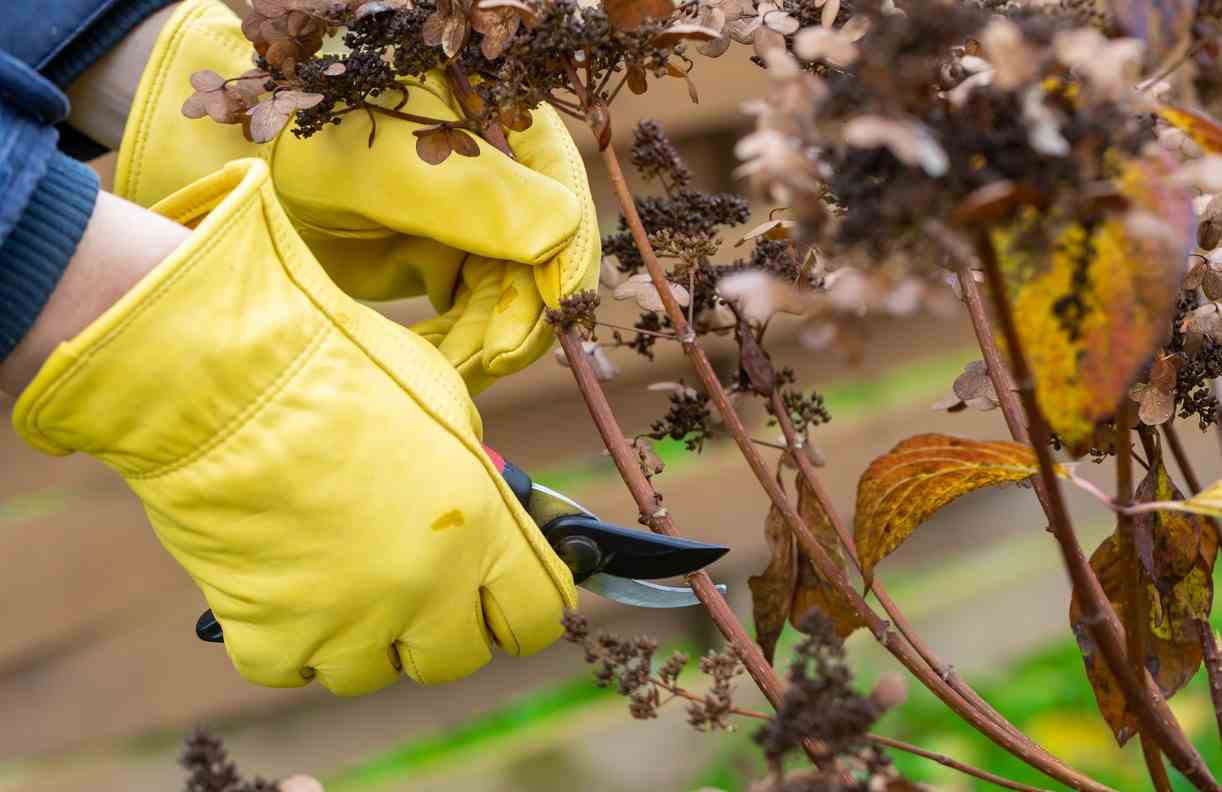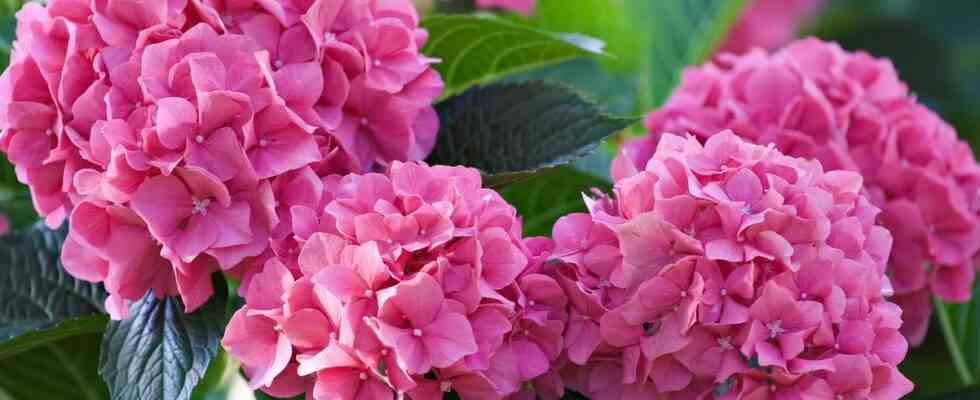Fact sheet
- Scientific name : Hydrangea
- Other name : Hydrangea
- Origin : Asia
- Kind : shrub
- Family : Hydrangeaceae
- Vegetation : perennial
- Foliage : deciduous, semi-evergreen
- Flower color(s) : red, white, pink, purple, blue
- Height : 0.80 to 2m
- Bloom : summer
- foliage in winter : Nope
- Exposure : semi-shade and shade
- watering : variable depending on the weather. Water in hot, dry weather. Touch the soil and if it is dry on the surface, water.
- Cut : march
Crop sheet
- Planting : preferably in autumn
- Exposure : partial shade for a beautiful flowering
- Floor : acid and humus soil
- Humidity : likes moist soil
- Use : pot, open ground (in beds, in a flowering hedge, in an isolated subject)
- Multiplication : easy by cuttings
- Diseases and pests : mealybug, powdery mildew, gray rot, red spider mites.
Hydrangea cultivation sheet
The hydrangea is an easy-to-grow plant, whether in a pot, in a planter or in the ground. As soon as we meet its needs, it is a plant which, with its beautiful luminous flowering, enchants the eyes for long weeks. Its inflorescences consist of a multitude of small flowers which can be united in large pompoms or in panicles.
Light
To ensure the optimal development of your hydrangea, favor a location in partial shade. It needs both sun and shade to be healthy. It can be a location facing east or west, where it will enjoy the sun at the start or end of the day, or in the north.
Certainly, you can see hydrangeas installed in full sun, but know that with such an exposure, the color of the flowers fades much more quickly. If you only have this type of exposure to offer yours, you must turn to a hydrangea capable of withstanding the sun, such as thehydrangea paniculata or thehydrangea arborescens which can even withstand periods of drought, on the other hand the inflorescences will be in the form of panicles.
Conversely, a hydrangea in full shade will struggle to flower unless you bet on a macrophyllaa hydrangea serrata or a climbing variety.
Temperature
The hydrangea is not hardy, strictly speaking, but it resists winters quite well in regions where the climate is temperate. Most hydrangeas withstand temperatures down to -15°C. However, some species are more sensitive, as is the case with hydrangea ‘Hanabi’, which fears temperatures below -7°, while others are more resistant, such as macrophylla, which can withstand temperatures down to -7°. 30°.
watering
hydrangeas hate and do not tolerate drought well. Two scenarios:
- Your hydrangea is potted: be sure to water it regularly and abundantly.
- Your hydrangea is in the ground : the first year, you must make sure to carry out regular and abundant watering, then later, you will only have to do it when the soil is dry.
To keep the soil moist longer, you can place a mulch around the base of the hydrangea. However, make sure that the water does not stagnate. This would risk rotting its roots.
Fertilizer
It is possible to use an organic fertilizer once a year to promote the flowering of your hydrangea.
Planting the hydrangea and repotting
After choosing the ideal location, it’s time to plant your hydrangea. Here are a few tips.
- Planting period : September is the ideal month to plant hydrangeas because it allows you to enjoy their flowering between June and October. But that doesn’t mean you can’t plant them all year round, as long as you avoid periods of frost or high heat.
- Earth : whether in the ground, in a pot or in a planter, rich soil is suitable for the hydrangea provided that it is acidic to neutral and that it remains cool in summer. On the other hand, if your soil is calcareous, you can add special hydrangea soil, a little compost, heather soil or organic matter. But be careful, the hydrangea cannot be grown exclusively in heather soil, because it is too poor to meet its nutritional needs.
- Planting distance : in the ground, the feet must be spaced 1.50 to 2 m apart.
- Pot : be sure to choose it large enough for your hydrangea and that the bottom is pierced. Provide a good drainage layer such as clay pebbles or gravel at the bottom of the pot to prevent water from stagnating. Use special hydrangea soil or a good forest soil.
- Repotting : it is to be carried out as soon as the roots seem too cramped.
Multiplication
The hydrangea is a plant feasy and quick to take cuttings. The best time to take cuttings is from August until the end of September. To do this :
- Select a beautiful stem of your hydrangea that is not bearing flowers and cut 20 cm from the end. To increase your chances of success, you can take several.
- Remove all the leaves except the top 2.
- Soak the cut area in water for a few minutes, then in rooting hormone. The latter is in the garden center. If it is not essential, it will allow you to considerably increase your chances of success.
- Plant your cutting in a pot filled with special cutting compost or in a mixture of compost and sand.
- Put your cuttings outside in a shaded area. Remember to water them regularly and remove stagnant water. In winter, keep your cuttings in a cool, dry, ventilated and above all frost-free place. As soon as spring arrives, you can put them in the ground or in pots.
Hydrangea care
The maintenance of the hydrangea is simple, because it is undemanding. Here’s what you need to know:
- The flower color of a hydrangea depends on the type of soil you are going to plant it in and the species. Indeed, a hydrangea which, at the base, has blue flowers, will offer you a red, pink or purple bloom if it has been planted in basic or calcareous soil. If you want it to remain blue, it will be necessary to acidify the soil, for example by adding crushed slate or iron sulphate.
- In winter, if your plant is less than 2 years old, you can protect it from frost with a winter veil.
- See to remove faded flowers and to prune the shrub in March.

How to prune the hydrangea?
If you are growing a hydrangea in a container, it is best to prune annually to contain its growth. In the ground, you can let it grow. However, in February or March, cut branches that are more than 3 years old at the level of young shoots to stimulate the appearance of new shoots that will bear flowers. Also be sure to remove faded flowers as you go.
Diseases
Quite resistant, the hydrangea still has some weaknesses:
- It is often attacked by scale insects. This is manifested by the appearance of white balls on the stems. It is possible to treat it preventively against this problem in the spring.
- He may be a victim of Sigatoka, a disease that manifests as brown spots on the leaves. Just tear off the affected leaves.
- It is also the target of red spiders, slugs or snails.
- It can also be affected by gray rot.
- When hit by powdery mildew a white felting appears on the underside of the leaves.

